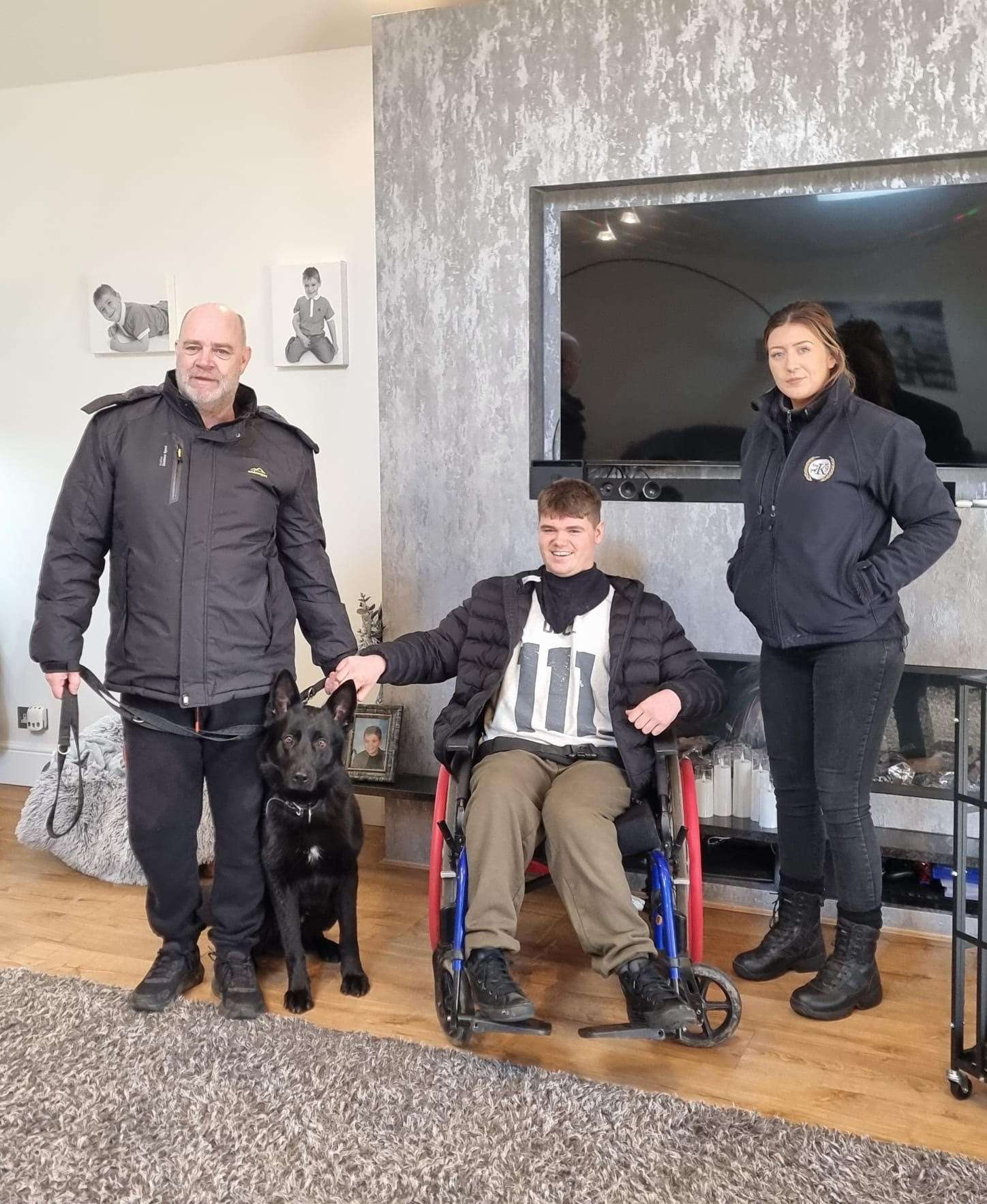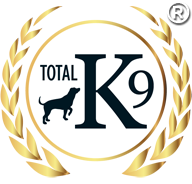Protection dogs are specially trained to guard against and deter threats to you, your loved ones and your property. By bringing a protection dog into your life, you will enjoy more than just a higher level of security; you’ll be investing in long-term, committed companionship. Although these dogs are well-trained, you still have lots to do as an owner to ensure your protection dog is performing at its best. In this article, we’ll show you how to get the most out of your protection dog and how to provide them with a happy, well-rounded life.
Choosing the Right Breed
Getting the most out of your protection dog should start long before you start any type of training. First, you should consider what makes a good protection dog, which in many cases comes down to the breed you choose.
Begin by assessing your specific needs. Are you looking for a dog to protect a large property, or do you need a more personal protection dog that can also live comfortably in a family environment? Different breeds have varying strengths and characteristics that make them suited for different roles and environments.
Choosing the Right Protection Dog Breed
Once you’ve defined your needs, research breeds known for their protection abilities. Here are a few commonly recommended breeds:
• German Shepherds: Known for their intelligence and versatility, German Shepherds are one of the most popular protection dog breeds. They are strong, obedient, and have a high working capacity which makes them suitable for both property guarding and personal protection.
• Belgian Malinois: Similar to the German Shepherd in many respects, the Belgian Malinois is slightly smaller but more agile. This breed is highly trainable and known for its exceptional work ethic and intense loyalty.
• Dobermans: Dobermans are known for their speed, agility and sharp intelligence. They are formidable protectors and are especially suited for personal protection due to their loyal nature.
• Rottweilers: Rottweilers are powerful dogs with a natural protective instinct. They are typically calm and confident, making them excellent guardians for families when properly trained.
Consider the Dog’s Background
When choosing a protection dog, consider its training and lineage. Dogs from a reputable trainer like TOTALK9 will come with a detailed history of their lineage and training regimen. This background gives insights into the dog’s potential health and temperament.
Training and Socialisation
Proper training and socialisation are two of the most important areas to get right as a protection dog owner. By focusing on these two parts of training early, you will be able to drastically improve the effectiveness and reliability of your protection dog. Here’s how to approach these essential aspects:
Comprehensive Training Programs
Start with basic obedience training, which forms the foundation for all further skills. Commands like sit, stay, come and down are essential. A well-trained protection dog must respond to these commands consistently, even in distracting environments.
Once basic obedience is mastered, move to more advanced training tailored to protection work. This should include teaching the dog to alert to strangers, guard specific areas, and, if necessary, safely subdue an intruder. Training should always be conducted by a professional specialising in protection dogs to ensure that the dog learns to act appropriately in actual threat scenarios.
Socialisation
Begin socialising your protection dog at a young age. Exposure to various environments, people, and other animals is really important in the early stages. This exposure helps the dog develop confidence and comfort in different situations, preventing over-aggression or fear.
Control the socialisation process to ensure positive experiences for both you and your dog. For instance, introduce your dog to new people in a controlled setting where you can manage the interaction. This helps your dog learn to be calm and measured in social interactions.
It’s also important to keep socialising your dog throughout its life. Even after initial training and socialisation, continually exposing your dog to new people, animals, and environments can help maintain their social skills and adaptability.
Physical and Mental Health
Maintaining the physical and mental health of your protection dog is also really important for their well-being and effectiveness as a guardian. Here’s how to ensure your dog stays healthy and alert:
Regular Exercise
Develop an exercise routine that matches your dog’s breed, age, and energy level. Protection dogs generally require more intensive exercise to manage their energy and maintain their physical condition. Activities might include long walks, runs, or playing fetch.
You should also incorporate activities that enhance strength, endurance, and agility for your protection dog. Obstacle courses, tug-of-war, and targeted agility training can provide physical challenges that keep the dog in peak condition while also sharpening their problem-solving skills.
Mental Stimulation
An often overlooked part of providing a good life for your dog is their mental wellbeing. So, make sure that you engage your dog in play that stimulates their mind. Puzzle toys, hide-and-seek games, and tracking exercises can help keep their cognitive functions sharp. These activities also reinforce training commands and improve their problem-solving capabilities.
Nutrition
The right diet can help keep your protection dog healthy and well-behaved. Provide a high-quality diet that’s appropriate for your dog’s age, size, and energy level. The right nutrition helps with maintaining their physical health and energy. Consider diets formulated for high-performance dogs, which can provide the energy needed for a working animal.
Health Care
Regular check-ups with a veterinarian can help catch and address health issues before they become serious. Ensure your dog is up-to-date on vaccinations, flea, tick, and worm treatments, and any other preventive care.
Since protection dogs undergo intense physical activity, they may require specialised veterinary care from time to time, including regular orthopedic evaluations, especially for breeds prone to hip dysplasia or other joint issues.
Stress Management
Learn to recognise signs of stress or anxiety in your dog, such as excessive panting, drooling, or a sudden behaviour change. Stress can impair a protection dog’s ability to function correctly and enjoy their life. To help with this, make sure that your dog has plenty of downtime to relax and recover from training and work. Comfortable resting areas and regular quiet times help manage stress and prevent burnout.
Building a Strong Bond
A deep, trusting bond between you and your protection dog helps foster effective teamwork and mutual respect. Here are some ways to strengthen your relationship and ensure your dog is not only a protector but also a loyal companion.
Quality Time Together
Spend quality time with your dog every day. This goes beyond basic care and exercise; it involves engaging in activities that both of you enjoy. Whether it’s playing games, going for a leisurely walk, or simply relaxing together in your living space, these moments strengthen your bond.
You can use training sessions as an opportunity to bond. Positive reinforcement techniques, such as using treats and praises during training, help to encourage good behaviour and make your dog associate obedience and tasks with positive outcomes and your approval.
Communication
Although this comes with time, it is really useful tounderstand your dog’s body language and vocalisations. Recognising what different signs mean can help you respond more effectively to your dog’s needs and emotions, which is key to building trust.
Use consistent commands and a calm, confident tone when interacting with your dog. Consistency helps the dog understand what is expected of them and reassures them about their role and your leadership.
Respect Their Space
Ensure your dog has a personal space where they can retreat when needed. A designated resting area, like a bed or a crate that is solely theirs, can provide a sense of security and belonging.
It’s equally important to respect your dog’s space and boundaries by not forcing interactions when they retreat to their designated safe area. This respect helps your dog feel safe and understand that they can trust you to heed their signals.
Regular Grooming
Engage in regular grooming sessions. Grooming is great because it keeps your dog healthy while also serving as a soothing interaction that can enhance bonding. It allows you to check for any physical issues that might need attention, while the physical contact helps to increase emotional bonding.
Play and Recreation
Incorporate play into your routine, choosing games that stimulate your dog’s mind and body. This not only helps in burning off excess energy but also in creating enjoyable shared experiences that can strengthen your bond.
Proper Equipment
Having the right equipment is essential for the health, safety, and effectiveness of your protection dog. Here’s what to consider when outfitting your canine companion:
Quality Gear
Invest in high-quality, durable harnesses and leashes designed for training and everyday use. A good harness should distribute pressure evenly across the dog’s chest and back, not the neck, to prevent injury during physical activities like training or apprehending.
You should also choose a collar that is comfortable and suitable for your dog’s size and strength. Collars should be firm enough to ensure control without causing discomfort or restricting breathing.
Protective Clothing
Consider the climate and environment where your dog will be working. In cold weather, a fitted dog coat can provide warmth without hindering movement. In warmer climates, cooling vests can help prevent overheating during intensive activities.
For dogs involved in active fieldwork, protective boots can shield their paws from harsh terrain and adverse weather conditions. Additionally, specialised protective gear, like vests designed to protect against bites or strikes, can be vital during high-risk situations.
Identification
Ensure your dog carries proper identification at all times. ID tags should include your contact information and any necessary health alerts. Microchipping your dog can provide an extra layer of security to help in recovering your dog if they ever get lost and it’s also a legal requirement for all dogs over 8 weeks old.
Care and Maintenance
Regularly inspect all equipment for signs of wear and tear. Replace any item that is no longer structurally sound or that could potentially harm your dog. Keeping equipment in top condition is a great way to ensure your dog’s safety.
As part of your maintenance routine, you should clean and disinfect your dog’s gear regularly to prevent the build-up of dirt and bacteria. This is especially important for items like collars, harnesses, and any fabric gear that comes into frequent contact with your dog’s skin.
Get the Most Out of Your Protection Dog With These Tips
A protection dog can be a game changer for your safety and security while also providing a loyal companion for years to come. By selecting the right breed and providing ongoing training and care for your protection dog, you can get the most out of this highly trained and dependable canine companion. Remember, a protection dog is not just a security measure but a loyal part of the family who deserves your care and respect.
If you have any questions about protection dogs, would like to discuss professional training or are looking for your own protection dog, our team at TOTALK9 would love to help. Please contact us today to discuss your needs further.

